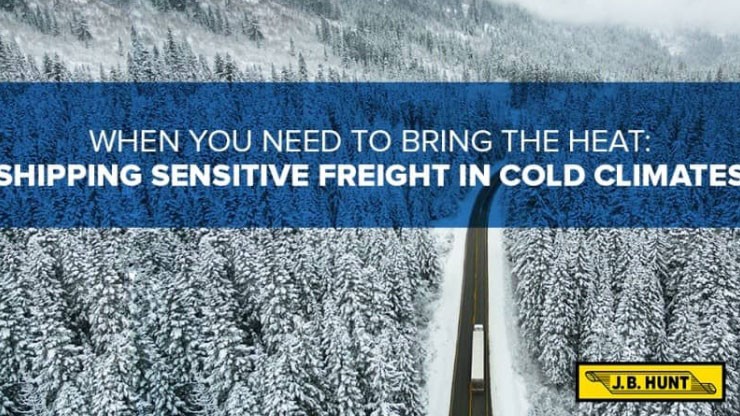When You Need to Bring the Heat: Shipping Sensitive Freight in Cold Climates

As winter begins to settle on the coldest regions of Canada and the United States, businesses are preparing their supply chains with plans for moving freezable and cold-sensitive freight through frigid climates. There are three cold-protect methods freight shippers use most. Knowing how they work can help maintain the integrity of your freight.
Types of Cargo that Require Cold-Protect Services
Maintaining above-freezing temperatures while in transit is essential to the quality of products that are sensitive to the cold. Decision-makers who opt out of cold-protect services for sensitive freight are putting their company at risk. Products not meant to be frozen can often not be sold at full price or sometimes at all, causing a huge loss in revenue. In addition, some temperature-sensitive products can expand if frozen and cause packaging and containers to burst, adding cleanup fees, replacement containers, and replacement products to the business' overall bill. Companies should take necessary steps to understand the freeze point of the product(s) to ensure safe transport. Use this table to guide best practices for maintaining product integrity.
Differences Between Temperature-controlled, Heated, and Protect-from-Freeze Methods
Some of the most important factors to consider when choosing a cold-protect strategy include the ideal shipping temperature of the product(s), the value of the cargo, and the distance traveled to deliver the shipment. These considerations will help determine the best method of protection for the shipment.
- Temperature-controlled trailers provide a stable environment and are often built with insulation features to help maintain consistent temperatures and avoid sudden temperature spikes/drops.
- Heated trailers feature an attached fuel-powered heating unit that circulates warm air throughout the container.
- Protect from freeze methods utilize alternatives to a heated trailer such as blanket wraps, foil wraps, and even warehouse conditions that maintain temperature before loading. Often, products that will not remain idle for long do not require a heated option due to vibrations of the truck helping maintain temperature.
J.B. Hunt offers expertise in shipping temperature-sensitive goods throughout Canada and the United States. When possible, schedule capacity for temperature-controlled shipments ahead of time. However, we know predicting shipping needs can be just as difficult as predicting the weather when time is short and temperatures are dropping, J.B. Hunt can provide the expertise and capacity your business needs to keep your freight safe in transit.
Contact us today!
Canada shippers: canada@jbhunt.com
U.S. shippers: customer.experience.directors@jbhunt.com

